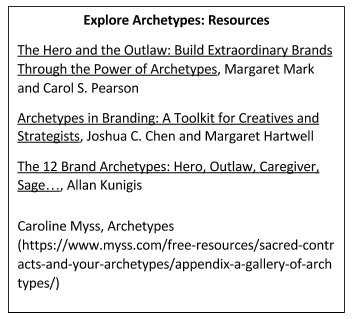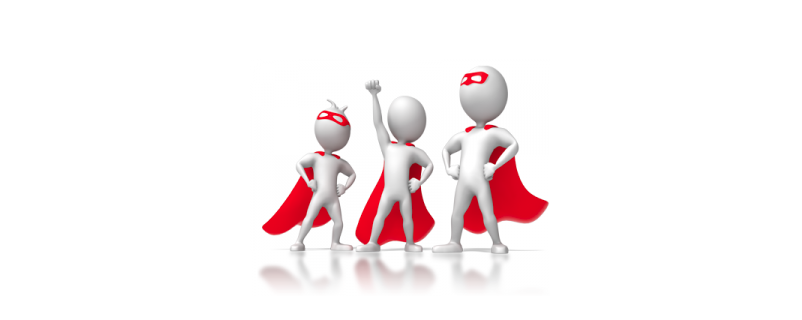“The contents of the collective unconscious are archetypes, primordial images that reflect basic patterns that are common to us all, and which have existed universally since the dawn of time.” Carl Jung
Smart brands leverage archetypes in their brand stories. Why? Because they create a meaningful structure or person for us to understand our world, which allows brands to create deep connections with consumers. Plus, archetypes telegraph their meaning to consumers, facilitating quick, high-impact messaging.
Let’s deconstruct that quote from Carl Jung a bit. What did he mean by:
- “Collective Unconscious” – this means that deep in our minds, we all connect with these archetypes. We may not realize it, or recognize it when it happens, which makes them all the more powerful.
- “Primordial images” – these are images that are not just time-honored, but that date back to our origins, the very founding of our species.
- “Basic patterns that are common to us all” – archetypes represent familiar behaviors that we all share.
- “Existed universally since the dawn of time” – they’ve been around a long, long time, folks!
So, what are these archetypes? They are characters, symbols, or personas that are common in all cultures and have existed throughout history. As a result, archetypes quickly evoke an emotional resonance and understanding within an unconscious framework. In short, they provide an efficient and meaningful structure that quickly helps consumers make sense of the world around them. Here are some examples:
- The Jolly Green Giant. Remember the Jolly Green Giant? Created in 1935 by a young Leo Burnett for frozen and canned vegetable brand Green Giant (now owned by B&G Foods), the green giant personifies the friendly, benevolent bounty of the harvest.
- The Farm. If you read our last blog, you remember our client with the food product brand story built around farming. As we digested the secondary research, in addition to brand story themes, we began to find potential archetypes influencing human’s relationship to the farm: the Mother (life-giving source of nurture and nourishment), Teacher (communicator of knowledge, experience and skill), the Creator (the expression of being God-like or the Source), and the Pioneer (seeker of independence and freedom. Because there were several archetypes that emerged as possibilities, the opportunity was to identify one or two that most closely resonated with their brand. That helped focus the brand story, which facilitated quick, concise and attention getting advertising.
- Starbucks. The “Adventurer” or “Explorer” archetype has famously been used by Starbucks in their brand story. Their logo contains a mermaid, they are global, they sell exotic coffees from around the world, and they encourage exploration in their patrons.
Archetypes do not always have to be personified (as in Green Giant and Starbucks); they also work as a non-visual element or theme throughout the brand story. And did you notice something else? Your chosen archetype is a vehicle to create meaningful distinction from your competitors. Archetypes are notoriously difficult to copy without appearing derivative.
You cannot have an archetype without a direct and consistent application of the archetype through all your consumer-facing operations and messag ing. You can identify hints, tips, and suggestions about the archetype that would fit your brand with qualitative research, but it’s up to you to emphasize and develop your archetype as part of your brand story. Further, although there are several widely used archetypes (see resources at right), you should not restrict yourself. Use a variety of sources in psychology, literature, philosophy, and branding to identify the archetype that best fits (and emerges from) your brand story.
ing. You can identify hints, tips, and suggestions about the archetype that would fit your brand with qualitative research, but it’s up to you to emphasize and develop your archetype as part of your brand story. Further, although there are several widely used archetypes (see resources at right), you should not restrict yourself. Use a variety of sources in psychology, literature, philosophy, and branding to identify the archetype that best fits (and emerges from) your brand story.
Your archetype – as expressed in your brand story – guides your marketing efforts. Creatives bring your archetype to life, and consumers interpret it into their lives, again contributing to your brand story. Your archetype shapes your customer experience, your competitive position, differentiation, and advantage – all influencing your brand story and enhancing your connections with your customers. Because archetypes are so universal and primordial, they telegraph a strong emotional connection to consumers that you can leverage to your brand’s advantage.
Contact FeltonBuford Partners today for qualitative research that will uncover your brand archetype!




